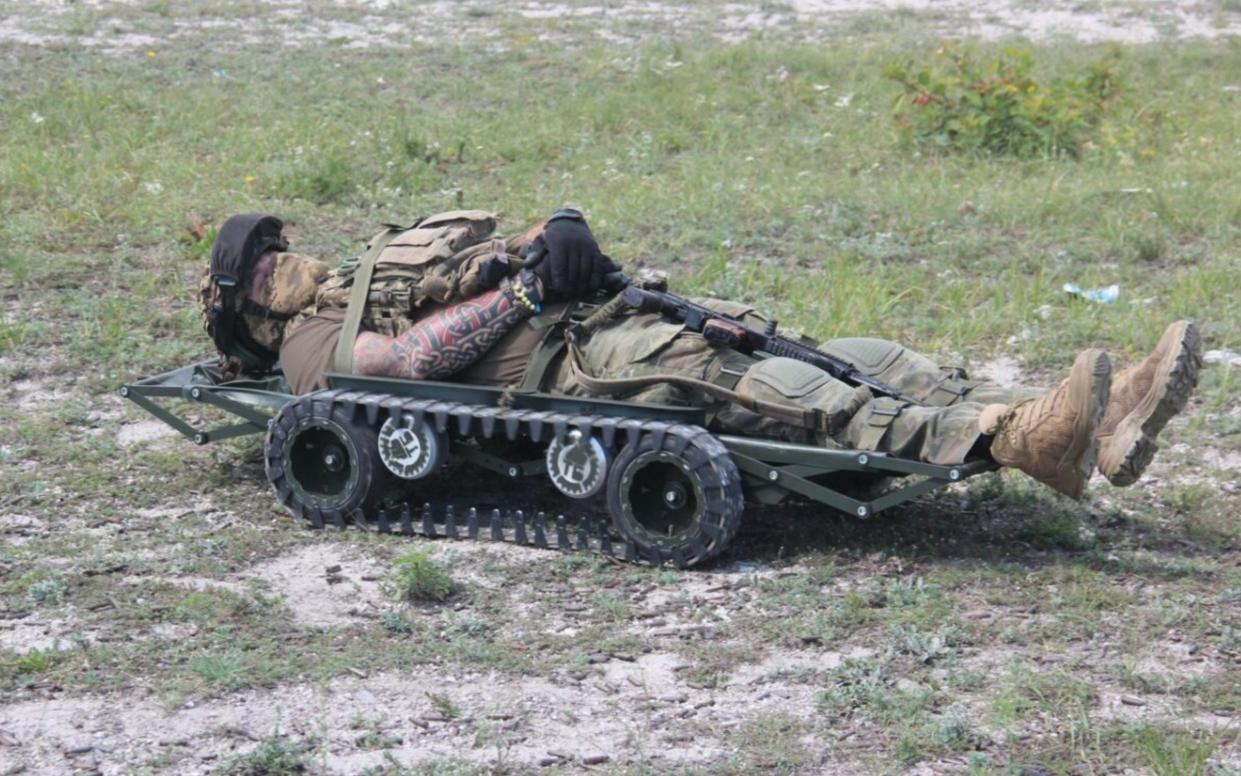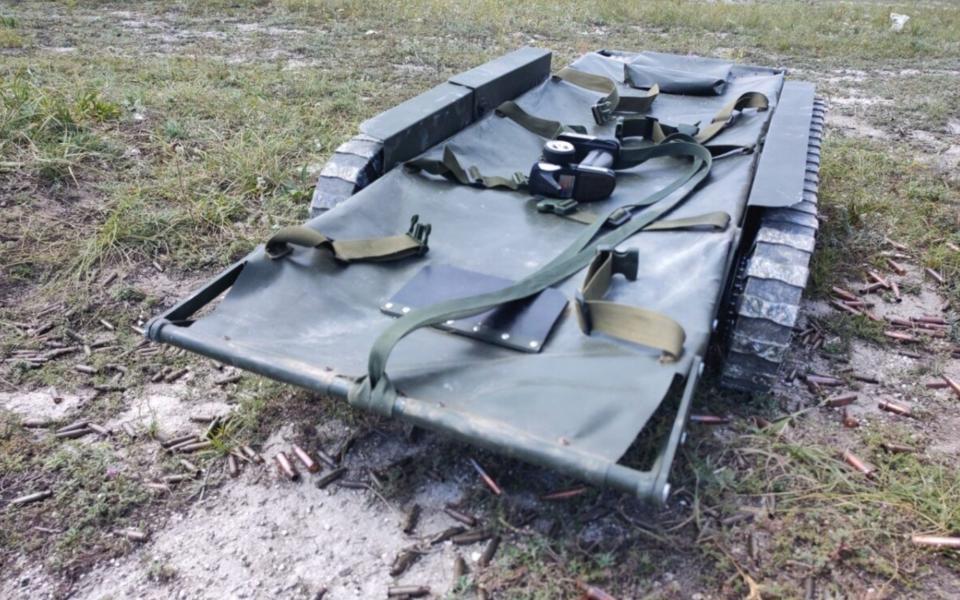The robot stretcher drone saving lives on Ukraine’s battlefields

A crowd-funded remote-controlled mechanical stretcher invented by a toy designer is now evacuating injured Ukrainian soldiers from the front lines.
Ukraine’s ministry of defence said that the stretcher mounted on small tracks can carry up to 150kg over rough terrain, with its controller able to operate it safely from a distance of 100 metres.
It quoted a Ukrainian combat medic as saying that the mechanical stretcher made it far safer to evacuate injured soldiers under fire.
“You can’t carry anything quickly when everything is exploding around you,” the soldier, identified by his call-sign Kylm, told the armyinform.com.ua website as he described that an evacuation using a hand-carried stretcher moved at around one mile an hour.

Fighting has been fierce along the front lines with Ukraine’s counter-offensive trying to break through acres of Russian minefields. Casualties have been heavy and analysts said that Ukraine now has more amputees than Britain did at the end of the Second World War.
Kylm said that after one close near-miss during a stretcher evacuation, he rang up an inventor friend.
“It turned out that he used to make toy radio-controlled tanks for children. Now he has reoriented and developed our stretchers,” he said. “Volunteers paid the cost, which is 70,000 hryvnias [£1,500] and we had the stretchers in two weeks.”
The main advantage of the mechanical stretcher is that the evacuation team is reduced to two or three men, rather than seven.
A Ukrainian scout with the call-sign Kamaz explained that one soldier walks 50m in front of the mechanical stretcher when it is evacuating an injured soldier and the controller walks 50m behind.
“It’s much more difficult for enemy reconnaissance to detect these stretcher parties and if they do notice they are much more unlikely to fire artillery shells at one man at a time because they have been short of shells,” he said.
Plans to buy more
The Ukrainian ministry of defence reported that the mechanical stretcher was already being used by its 125th Territorial Defence Brigade on the eastern front line and that there are plans to buy more.
It also said that the stretchers could be adapted to deliver ammunition and water to the front lines.
The 18-month-long war in Ukraine has seen countless innovations around drones.
Civilian drones have been adapted to drop hand grenades into trenches and spot enemies, and naval drones have advanced from short-range defensive functions to striking targets hundreds of miles away across the Black Sea.
Ukraine is not the only country developing drones to carry wounded soldiers to safety.
Defence manufacturer BAE Systems has also been designing a prototype mechanical stretcher for the British Army called the Ironclad, which it showcased in 2017.
Ironclad was the name of the original low-slung iron warships used during the 1861-65 American Civil War as naval warfare transitioned from traditional tall wooden ships, a major technological military shift.

 Yahoo News
Yahoo News 
